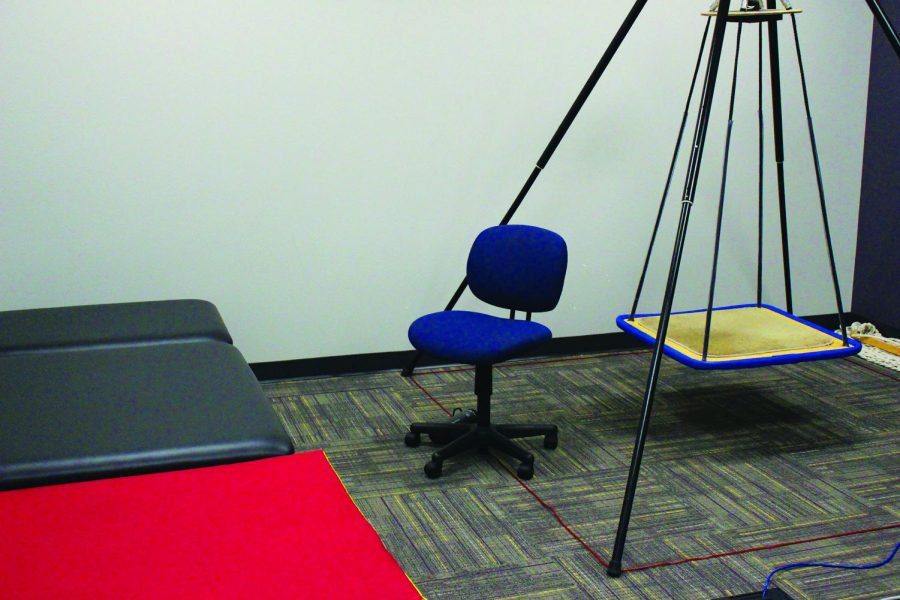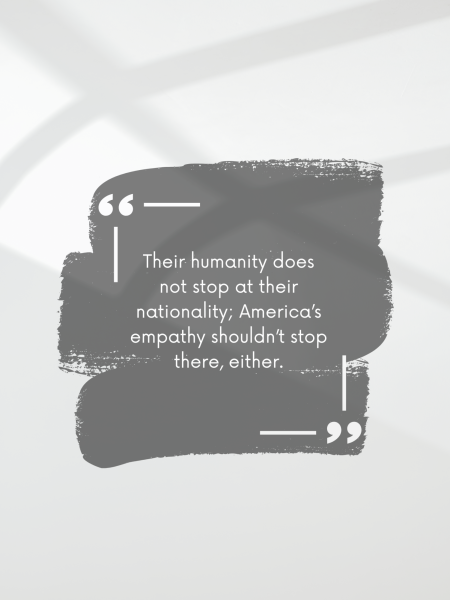Set apart should not mean set back
Imagine being in a crowded room. There’s music playing in the background somewhere, and lots of people go about their day, talking loudly or laughing, constantly moving and bumping into each other. Imagine trying to complete a homework assignment or even think clearly while this is happening. This scenario is a prime example of what it is like to be overstimulated.
Overstimulation is typically used to describe the state of someone overwhelmed and unable to function “normally.” This is precisely the kind of situation that special education students face daily. An easy fix for this complex condition is providing them with the tools they need to learn how to self-regulate and improve their immediate surrounding environment.
Occupational Therapist Tim Gundy says, “We can’t just expect those who do not work directly with students who have special needs to completely understand the extent of some of those special needs.”
What is a sensory room?
It is a space designed to help provide people with the ability to fill and regulate each of their different sensory needs. Sensory rooms —also known as motor or mobility rooms— are one of the most beneficial resources a school can provide for their special education students. According to the article “The Benefits of Sensory Rooms for Children with Autism and Social/Emotional Challenges,” these rooms provide students with tools to cope with incoming stimulation. They engage different parts of the brain, help with memory, help exercise fine and gross motor skills, and help students to communicate with their peers and teachers.
Every person has a different sensory “diet.” Sensory needs can be thought of in terms of diverse-size containers. Each sense —sight, sound, touch, taste, and smell— is received by different people at different levels of intensity.
Every person, disabled or not, has different sensory needs. These needs can be considered in terms of different-sized “sensory cups.” A large or small cup does not indicate something good or bad but suggests how a person regulates and responds to incoming sensory information. If the cup is empty, it may be hard for a child to focus; if the cup is too full, the same is true.
A “large cup” means that a person needs a lot of sensory input to “fill” the cup. A “small cup” means it takes very little information to overflow the cup or overwhelm the person. This is where regulation comes into play.
Why is it essential for these students to be able to self-regulate and respond to their environment? There are several reasons. Being able to cope with incoming information can lead to better communication skills and help these kids learn how to self-advocate for the things they need. Many special education students have never had the opportunity or the tools to self-advocate or be able to represent themselves.
According to Williams’ and Shellenberger’s Pyramid of Academic Learning, sensory needs are the first layer, meaning that if they are not met, academic learning is unattainable.
Gundy says it best: “It’s education. We’ve got to continually educate… that allows that individual to maybe stay at school an entire day, which is what we want. We want them to be in the school building; we want them to be as productive and on task as possible. Sometimes filling the cup takes all those little things we can incorporate.”
The situation at LHS
The current sensory space at Lewiston High School raises some significant concerns. To begin, the room does not meet the needs of the students in terms of functionality. The area is extremely small and spills over into their everyday classroom.
“I’ve made this whole (class)room basically a sensory room because we have a lot of kids with sensory needs. Having a quiet space to go along with it is a bit difficult,” said Robin Stone, a special education teacher at the school.
Previously, items like the swing and the trampoline didn’t fit in the designated sensory space, which since then has changed. The department has been able to utilize a larger room for those items.
“I’d say overall I feel very positive about our efforts and direction in providing a well equipped motor room area to our students who need that space,” said Gundy.
The room currently does not contain the equipment he likes to use, which includes, at the bare minimum: a therapy ball with a stable base, natural light, floor mats, velcro wall exercises, a mini trampoline, a rocking chair, bean bag chairs, some type of swing, hoops, 4-8 pound medicine balls, a whiteboard or chalkboard, and a weighted blanket.
Right now, the room contains no windows, and the students have very few options as to what sensory items they can use. And they are often only accessible to one student, which creates problems when multiple kids need sensory stimulation simultaneously (Stone).
Para Pro, LoRissa Schmittle said, “We don’t have a lot of stuff in there. Certain things are for certain kids, and other kids aren’t able to use them.”
Part of the problem is that during the making and building of the new high school, the special education department had little say in what types of things were built into their new classroom.
Not only does the lack of sensory space create a physical barrier, but these kids experience difficulties with social interaction, communication, and comprehension.
As children, we learn to react and respond to stimuli correctly, but these kids missed those milestones and continue to learn how to do this every day while also being in a classroom setting.
As previously stated, sensory spaces are necessary to help engage different parts of the brain and improve visual, tactile, and auditory processing skills, including fine and gross motor skills. This is where occupational therapy is implemented. Occupational therapy deals with rehabilitation through performing physical activities useful in daily life. Sensory rooms help provide calm and comfort for students, enhancing self-regulation and leading to better focusing habits. This means that in the classroom the students will be better able to make decisions, interact with peers and teachers and increase their ability to self-advocate if given access to the proper materials and educational tools to do so.
“Really, any child or any student can just benefit from a place to go and kind of relax… whatever that just right kind of activity is for them, and that hopefully provides them a window of time where they can go back in their classroom with their peers and be calm, on task, alert and help them stay in school for a complete day,” said Gundy.
Although some would argue that the current sensory space is adequate and the tools available to the kids are enough, it is clear that many sensory needs still need to be met. At the very least, there should be more focus on what the kids need.
“How do you fill that need without a sensory room at school… they need it intermittently all day. We need them to learn, but they can’t learn if they’re not getting those needs met,” said Stone.
There is simply not a high enough focus on our students with disabilities. In a school that prioritizes athletics over nearly everything else, things like the special education department and its needs often get forgotten.
“I don’t think everybody shares the same idea that these kids can be contributing members of society and that it takes maybe a little extra help, maybe a little extra time to learn it, but they can be. And that should be our focus as a school district– developing participating members of society,” says Stone. “They can contribute, and I don’t think everybody’s on board with that.”
Because many of these kids cannot advocate for themselves and what they need, they don’t have the opportunity to get it. Having an adequate sensory room is just the beginning. LHS needs to move towards a culture where students and teachers understand all ranges of sensory needs.
There are simple things LHS can do to support these students and provide them with the necessary tools to be successful. Gundy, Stone, and Schmittle, who work directly with the students, all have unique ideas of their ideal sensory room, ranging from just more space to sensory stations and individualized sensory materials. Each of them identified money as the central conflict in providing this room. At the very least, LHS should start a fund dedicated to improving and implementing a suitable sensory room. It’s a learning tool, and it’s a necessity. These kids already go through life set apart. There is no reason their education should also have a hand in setting them back.
“We can do better and we’re trying to do better. We just have to keep pushing for that,” said Gundy.






